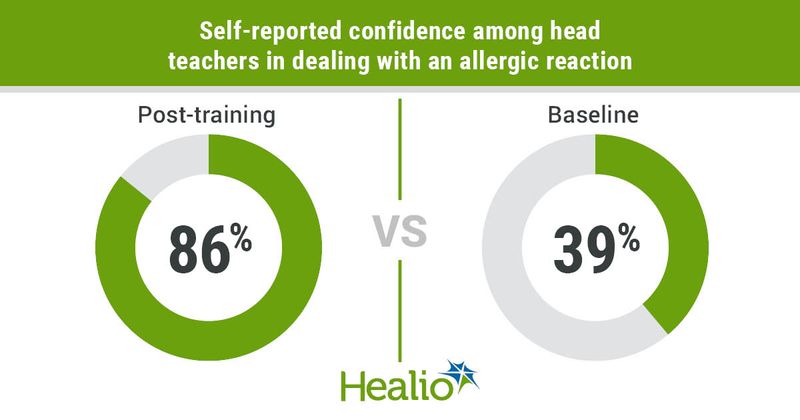Face-to-face allergy training improves preparedness, policies for school staff
A face-to-face school allergy training program improved self-reported preparedness among staff in management of children with severe food allergies, according to study results published in Clinical and Translational Allergy.
The researchers previously reported that school preparedness for anaphylaxis was below the safety standards set by the United Kingdom’s Department of Education and recommendations from the European Academy of Allergy and Clinical Immunology.

“When surveyed, school staff expressed a desire for training and a preference for a face‐to‐face format,” George Raptis, MD, MSc, PhD, honorary clinical senior lecturer and consultant in pediatric allergy at Royal Hospital for Children in Glasgow, United Kingdom, and colleagues wrote. “This type of training has been shown to elicit a more efficient response to an anaphylaxis scenario, compared with online training, and to be effective at improving school staff awareness and knowledge of allergic diseases.”
Raptis and colleagues surveyed all staff — including teachers, administration, cleaning personnel and bus drivers — from 18 primary schools regarding their level of preparedness in managing cases of severe allergy. Of these, five schools reported having pupils at risk for anaphylaxis and availability of an adrenaline auto-injector. Two of these five schools did not have a personalized allergy action plan in place.
Following the survey, an allergy specialist delivered a 90-minute training session with material that was peer-reviewed by a multi-professional team of local allergy services. The training also included a practical workshop and an interactive presentation covering the overall management of children with severe food allergy and drills for managing allergic reactions and anaphylaxis.
Fourteen schools completed the follow-up survey provided 2 months after training.
Post-training survey results showed an increase in self-reported confidence among head teachers in dealing with an allergic reaction compared with baseline (86% vs. 39%; P = .016). Head teachers also reported increased confidence in being prepared to manage a severe allergic reaction in a child with no previous history of allergy (93% vs. 44%; P = .016).
The researchers also found an increase in arrangements or consideration of teaching sessions for pupils on how to manage their allergies (93% vs. 45%; P = .03) and adoption of no food sharing policies (100% vs. 61%; P = .03).
Limitations of note included the small sample size, the likelihood of school participation being based on registered pupils with allergies and self-reported confidence being a subjective measure. However, the researchers highlighted the general trend toward improved preparedness from respondents.
Along with self-reported preparedness, Raptis and colleagues found that the training intervention appeared to stimulate an allergy policy review within schools to address staff training needs and those of children living with allergies.
“These two factors can contribute to the fundamental need to improve the safety and quality of life of patients through an allergy-aware society,” they wrote.

